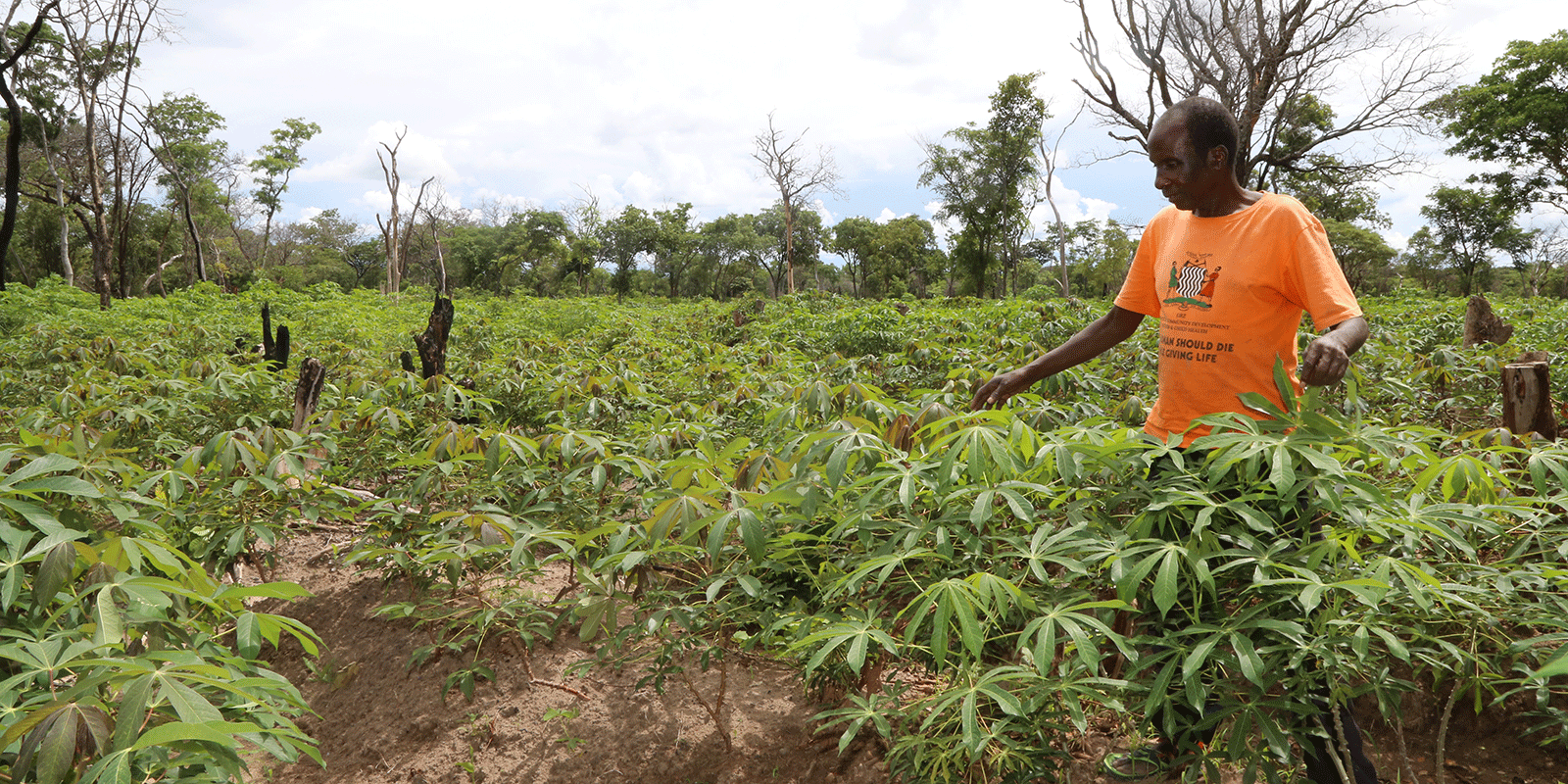False Banana, Real Impact: The East African Superfood

In Ethiopia, there’s a plant called the “enset” that just might be a key player in the fight against hunger. The enset, also known as the “false banana” as it resembles a small, rounded banana, feeds 20 million people across Ethiopia and can be found natively across East and Central Africa. Despite its relatively widespread consumption in parts of Ethiopia, its potential in public health remains largely unrecognized.
What is enset?
Enset, also known as the "false banana," is a tall plant native to Ethiopia and other parts of East Africa. It looks similar to a banana plant but doesn’t produce edible fruit. Instead, enset is valued for its large, starchy underground corms and thick, trunk-like pseudostems.
The enset plant can grow up to 11 meters tall, with large leaves that can reach 5 meters in length. The pseudostem is made up of overlapping layers of leaf sheaths, and the corms, which are the swollen parts at the base of the plant, can grow up to 2.5 meters in diameter. These corms represent a significant part of the plant's weight and are a key resource in areas where enset is grown.
Though enset is related to the banana, it’s a perennial plant, meaning it grows for many years. The plant is also valuable beyond food—its leaves are used to make ropes, baskets, and mats, and its root system helps prevent soil erosion. Enset thrives in various environments and is well-suited to the highland areas of East Africa, where it provides a steady source of food and materials for local communities.
Source:

Why the hype?
What makes enset stand out is its flexibility—it can be harvested at any point during its 7 to 12-year growth cycle, long before it flowers or dies. This means farmers can decide when to harvest based on their needs, like if other crops aren’t available or if they’re facing a tough season. It helps provide a steady food supply, even during lean times, which is great for subsistence farmers.
Enset is also very resilient. It doesn’t need irrigation, so it thrives in areas with limited water available. This makes it especially valuable in drought-prone regions where other crops might struggle. On top of that, enset is one of the highest-yielding crops per hectare in its region, making it a highly efficient use of land.
Another benefit of enset is its vegetative propagation, which means farmers can easily grow more plants from the ones they already have. By keeping different age classes of plants, enset ensures that there’s always something to harvest, even in times of crop failure or bad weather, making it a reliable source of food year-round.
Researchers have also found that it has the potential to grow across a vast area, even accounting for possible effects of climate change, with the potential to feed another 100 million or so people. Basically, you can plant it whenever you want, you can harvest it whenever you want, it lives for a long time, it doesn’t need a lot of water, and it has incredibly high yield. All of this means that it has a lot of potential to alleviate hunger in Africa.
Source:https://www.feedipedia.org/node/21251

How is it used today?
In Ethiopia, enset is a vital crop grown primarily in the highlands by smallholder farmers. It's a key part of the diet for millions, serving as a major source of starch. Enset is cultivated for its underground corm and pseudostem (rather than its fruit), which are processed into food products like porridge and bread.
Enset is often grown alongside other staple crops like maize, wheat, barley, and teff, creating a diverse farming system. Many households also raise livestock, which supports their self-reliance. On average, farms in enset-growing regions cultivate around six different food crop species, ensuring a varied and resilient food supply. This diversity helps buffer against the risks of crop failure or seasonal shortages.
Most enset-farming families rely heavily on enset, consuming its products in two or three meals a day. This makes enset not just a food staple, but also a key element of household food security. The ability to grow enset alongside other crops means families can balance their nutrition with a mix of different foods, while also minimizing the need to purchase external food products. This makes enset a cornerstone of the sustainable agricultural practices in the Ethiopian highlands.
Source: https://alliancebioversityciat.org/stories/enset-farming-ethiopia-explained-smallholder-farmers
Why isn’t it more widespread?
Despite enset’s potential, it still hasn’t really made a mark outside of Ethiopia. One of the main barriers is Ethiopia’s restrictions on the international transfer of plant material. These rules are in place to protect the country’s indigenous bio-resources, which includes enset. While this helps safeguard the crop, it also limits the ability to share or grow enset in other parts of the world.
Another challenge is that the knowledge required to successfully grow enset is closely tied to specific cultural groups in Ethiopia. This cultural connection is vital, as enset farming involves practices like fermentation that are deeply embedded in local food traditions. For people outside these communities, adopting enset farming may feel unfamiliar or difficult without the right cultural context and expertise.
Local dietary preferences and cultural aspirations also play a role. Many regions have established food cultures that might not be ready to embrace enset, especially since its use often involves preparing fermented products, which may not align with the eating habits of other countries or communities.
All of those barriers, coupled with a challenging social and political context in Ethiopia, mean that so far enset still has a lot of room to grow before it can become a widely-used staple crop.
Source: https://www.weforum.org/stories/2022/03/enset-food-insecurity-famine-ethiopia/
How might enset reach its potential?
While there are many barriers to implementing enset growth at a larger scale, many of those challenges are solvable. One example that inspiration can be drawn from is the spread of cassava in Zambia. In Zambia, cassava faced challenges related to low yields and poor-quality planting materials, which hindered its potential. To tackle these issues, a holistic approach was adopted, which included working with farmers to improve yield, introduce high-quality seeds, and establish processing plants. The collaboration between government, researchers, and the private sector ensured that farmers had access to improved planting materials, as well as the training and resources necessary for success.
A similar approach could be applied to enset, particularly in overcoming the knowledge gap associated with its cultivation. Just as the cassava project worked to disseminate information on planting techniques and disease-free planting materials, similar strategies could be developed for enset. Research into high-yielding enset varieties could be paired with farmer education on best practices, such as fermentation methods for food processing. Additionally, establishing partnerships with local farmers and processing industries would ensure enset could be marketed, much like how cassava’s use as animal feed and in processed products created demand.
Source:

Takeaway
In conclusion, enset is a crop with remarkable potential to play a significant role in addressing food insecurity and promoting climate resilience, especially in regions prone to drought and unpredictable weather patterns. Its ability to thrive in harsh conditions, coupled with its high yield and versatile uses, makes it a strong candidate for improving food security in East Africa and beyond. However, several barriers still prevent it from reaching its full potential on a global scale, including Ethiopia’s restrictions on the transfer of plant material, the deep cultural knowledge required for its cultivation, and local dietary preferences. To overcome these challenges, a strategic approach similar to the successful spread of cassava in Zambia could be adopted. By focusing on research, farmer education, and creating market demand, enset could be introduced to new areas and grow beyond Ethiopia's highlands. With continued investment in partnerships between governments, researchers, and local farmers, enset can become a vital crop for food security and sustainable agriculture in many regions, offering hope for a more resilient agricultural future.


